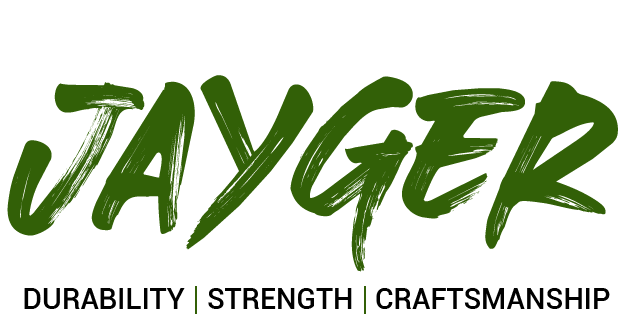Essential Tips for Maintaining Your Meat Cleaver

If you’re a meat lover, a Damascus meat cleaver is an essential tool in your kitchen. But to keep it in top condition, you must know how to maintain it properly. So we’ve covered you with these essential maintenance tips from cleaning to sharpening. Plus, if you’re in the market for choosing the right meat cleaver or a camping knife, we’ll help you choose the right one for your needs.
Clean your meat cleaver after every use
One of the most important things you can do to maintain your cleaver is to clean it after every use. This will prevent bacteria or food particles from building up on the blade and handle.
To clean your cleaver:
- Wash it with warm, soapy water and dry it thoroughly with a clean towel.
- Avoid using abrasive cleaners or scrubbers, as they can damage the blade.
- If you notice any rust or discolouration on the blade, use a rust eraser or a mixture of baking soda and water to remove it gently.
Avoid using your cleaver on hard surfaces
While using your cleaver on hard surfaces like cutting boards made of glass or stone may be tempting, it’s important to avoid doing so. Using your cleaver on hard surfaces can cause the blade to become dull or even chip, which can be dangerous when using it to cut meat. Instead, use a wooden or plastic cutting board to protect the blade and keep it in top condition. Additionally, avoid using your cleaver to chop through bones or frozen meat, as this can also damage the blade.
How to Sharpen Your Meat Cleaver for Optimal Performance?
Sharpening your cleaver is crucial for optimal performance in the kitchen. Use a sharpening stone or honing rod to sharpen the blade. Hold the blade at a 20-degree angle and run it along the stone or rod in a back-and-forth motion. Repeat this process on both sides of the blade until it is sharp. Remember always to use caution when sharpening your meat cleaver and to keep your fingers away from the blade.
Sharpen your cleaver regularly
A dull meat cleaver can be dangerous and ineffective, so it’s important to sharpen it regularly. You can use a sharpening stone or a honing rod to sharpen your meat cleaver. Hold the blade at a 20-degree angle and run it along the stone or rod, starting at the base of the blade and working your way up to the tip. Repeat on the other side of the blade. Test the sharpness by slicing through a piece of paper or a tomato. If it doesn’t cut smoothly, repeat the sharpening process. Remember always to use caution when handling a sharp blade.
Use a honing rod to maintain the edge
One of the most important steps in maintaining your meat cleaver is regularly using a honing rod to maintain the edge. A honing rod is a long, cylindrical tool used to realign the blade’s edge. To use a honing rod:
- Hold the rod vertically with the tip resting on a stable surface.
- Hold the cleaver at a 20-degree angle and run the blade along the honing rod, starting at the base of the blade and working your way up to the tip.
- Repeat this process on the other side of the blade.
Regularly using a honing rod will help keep your meat cleaver sharp and ready.
Storing and Organizing Your Cleaver to Prevent Damage
Proper storage and organization of your meat cleaver are essential to prevent damage and ensure it stays in top condition. Store your hand forged knives in a block or magnetic strip to protect the blade and make it easily accessible. Avoid storing it in a drawer with other utensils, as this can cause the blade to become dull or damaged. Additionally, always clean and dry your cleaver before storing it to prevent rust and corrosion.
Proper Cleaning Techniques
Proper cleaning is essential for maintaining the longevity and effectiveness of your Damascus meat cleaver. After each use:
- Rinse the blade with warm water and mild soap, then dry it thoroughly with a clean towel.
- Avoid using abrasive sponges or harsh chemicals that can damage the blade.
- For tough stains or residues, use a mixture of baking soda and water to scrub the blade gently.
- Always store your meat cleaver in a dry place to prevent rust and corrosion.
Preventing Rust and Corrosion
Rust and corrosion can quickly damage your meat cleaver if not properly prevented. After each use, thoroughly clean and dry the blade to remove any moisture or food particles that could cause rust. You can also apply a thin layer of mineral oil to the blade to help prevent rust and corrosion. If you notice any rust spots, use a rust eraser or a mixture of baking soda and water to remove them gently. Regular maintenance and care will keep your meat cleaver in top condition for years.
Regular Maintenance Practices to Extend the Lifespan of Your Meat Cleaver
Maintaining your meat cleaver is essential to ensure it lasts for years. Regular maintenance practices include:
- Cleaning and drying the blade after each use.
- Applying a thin layer of mineral oil to prevent rust and corrosion.
- Using a rust eraser or baking soda and water mixture removes rust spots.
Additionally, ensure to sharpen the blade regularly to maintain its sharpness and effectiveness. By following these maintenance tips, you can extend the lifespan of your meat cleaver and keep it in top condition.
